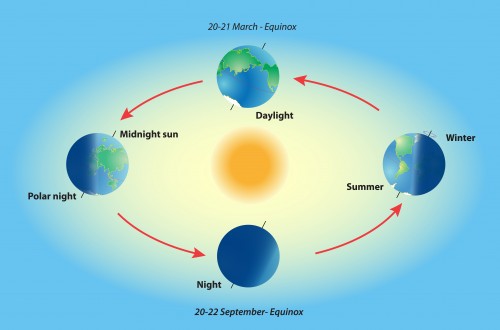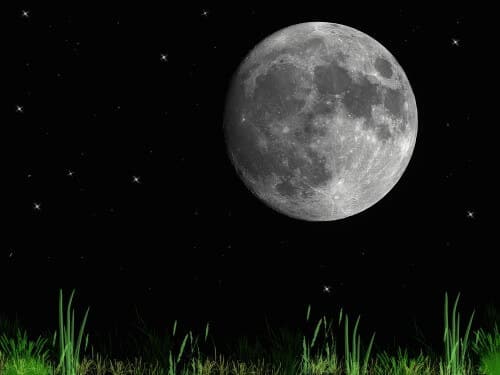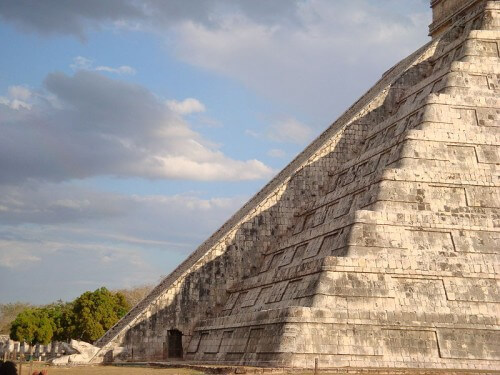Update for March 20, 2019: This year the exact point of the equinox occurred one minute before midnight, while the moon will reach full moon at 03:43, a day after it was at the closest point to the Earth in its orbit.

The sun and the moon prepare us for an astronomical night. Tonight, one minute to midnight before the 21st of March, was the point where the sun reverses its direction. This is actually the exact time within the entire day called the Vernal Equinox. Coincidentally, the full moon is also particularly strong, a phenomenon known as SUPER MOON or super moon - when the moon is close to the Earth, and full at the same time.

SUPER MOON
As far as the astronomers are concerned, the term super moon, invented by astrologers, has no meaning. From an astronomical technical point of view, it is a phrygia-syzygous, which means a new moon or a full moon that occurs when the moon is in phrygia (the closest point in its orbit to the earth) or near it."
There is nothing new in this because the moon reaches the perigee once a month and in some cases twice, even if its distance changes by 3%. But this time it is a combination of the greatest approach and the full moon.
The equinox occurred one minute before midnight tonight (still on March 20). At 03:43 Israeli time (March 21), the moon will reach its peak size and this is less water after reaching the closest point to the earth in its elliptical orbit, therefore it appears larger than an average full moon.
The vernal equinox is one of the most celebrated astronomical events in thousands of years. The term Vernal comes from the Latin word meaning blossom and refers to the fact that this day marked the end of winter and the beginning of spring in the Roman Empire. Of course, this term is associated with the North - that is, in accordance with living in the Northern Hemisphere, because in the Southern Hemisphere it is the autumn equinox. The meaning of the word equinox in Latin is "equal night". The autumn and spring equinoxes are the only days of the year when the time of light and the time of darkness are equal in length, when the sun crosses the celestial equator.
At the equinoxes, the Earth's inclination relative to the Sun is zero, and this means that the Earth's axis does not point towards or away from the Sun. This is despite the fact that the earth's inclination towards the plane of its rotation around the sun or the plane of the whip is always about 23.5 degrees.

Mayan spring sacrifices
The equinoxes and the shortest and longest days of the year (winter and summer solstice respectively) have been celebrated in various cultures around the world since the beginning of written history. One of the most famous celebrations in the ancient world were the religious ceremonies held by the Mayans near the Great Pyramid in Chichen Itza in Mexico.
The pyramid, also known by its Spanish name El Castillo has four staircases from its bottom to its top where human sacrifices were made. The staircases were built at a calculated angle so that they would look like a long snake in the sunlight descending on the stairs at exactly the moment of the equinox. Astronomical knowledge about the equinoxes, the short day and the long day are essential for the development of calendars, another thing the Mayans specialized in. They only have one problem, they couldn't plan to infinity like the boards in the old world, and their board ended on December 21, 2012 at 11:11 GMT. As you probably know. nothing happened.
Easter
Easter Sunday is celebrated by Christians who believe in the return of Christ and it is celebrated, unlike other Christian holidays, on the Sunday before or after the equinox.
Higan - a Buddhist holiday
Higan is a holiday that Buddhists in Japan celebrate during a week around the spring and autumn equinoxes. The two equinoxes became national holidays during the Meiji period - (1868-1912). Higan means "the other shore" and the name refers to the dead spring that reached nirvana after crossing the river of existence. This holiday constitutes the spiritual step from the world of suffering to the world of happiness.
Nowruz - Persian New Year
Iranians celebrate the new year (Nowruz) during the equinox in March. According to the Persian calendar, Nowruz celebrations last 12 days and originate from the pre-Islamic period in the historical Persian religion. The preparations start a long time before and include buying new clothes for all family members and thoroughly cleaning the houses. Wheat representing new growth is grown on a flat plate a few days before the start of the new year in a custom known as Sabzeh or green thor.
Earth Day
Some environmental organizations set Earth Day for March 20 while others set it for April 22. It is a common day for people of all nations, religions and cultural backgrounds celebrating what they have in common - life on earth. This day is used to promote the preservation of natural resources and the prevention of pollution and other destructive forces. Earth Day activities include planting trees, cleaning up waste on roadsides and building recycling and conservation facilities. Earth Day was first observed in 1970.

2 תגובות
As a connoisseur you are quite stupid
Amazing article - thank you, Abi!
Preparing a short overview of several cultures around the world, with the most "attractive" details - this article is interesting in every line and every paragraph.
What is missing is the reference to Stonehenge - but reviewing the details of lesser known cultures makes up for the ignoring of Stonehenge in an excellent way.